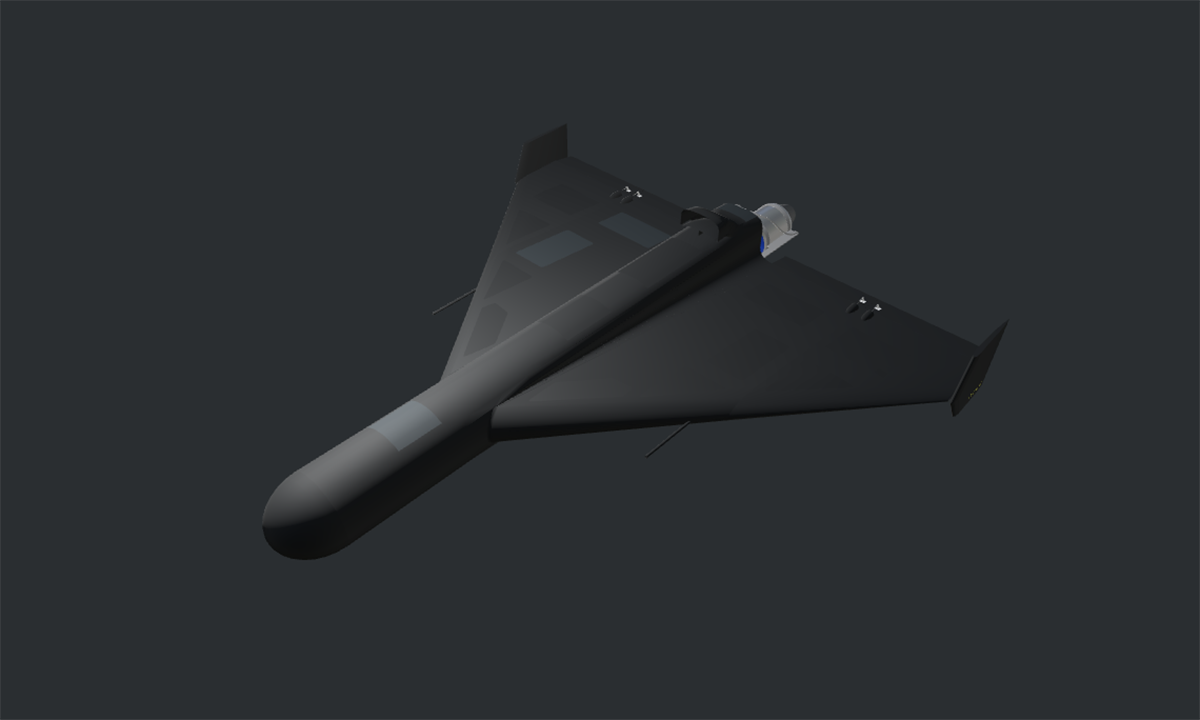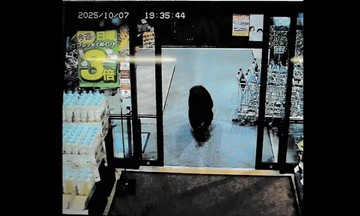On 16/9, the Main Directorate of Intelligence of the Ministry of Defense of Ukraine released an analysis of the Geran-3 suicide drone recently deployed by Russia. The report included 3D renderings and detailed information about the aircraft's internal components.
The Geran-3 is equipped with a jet turbine engine, unlike the propeller-driven Geran-2, enabling it to reach speeds of 300-370 km/h and a range of 1,000 km. "The aircraft typically reaches its highest speed when penetrating air defenses and during its terminal dive towards the target," the report stated.
The Geran-3 shares a similar structure and electronic components with the Geran-2, with both versions utilizing the same camera and video transmission system. "It is equipped with a 12-element Kometa-M12 controlled reception pattern antenna (CRPA) to protect the satellite navigation system from jamming," Ukrainian intelligence reported.
 |
3D rendering of the Geran-3 UAV published on 16/9. Graphic: GUR |
CRPA systems like the Kometa typically use multiple small antenna elements to detect and eliminate false signals, a primary method of satellite signal jamming. The CRPA can receive low-power signals from satellites even in environments with strong jamming sources.
"This measure makes it almost completely immune to the dense electronic warfare systems deployed on the battlefield," commented Jake Epstein of Business Insider.
Ukrainian intelligence also identified a total of 45 foreign components within the Geran-3, mostly from the US and its allies such as Switzerland, Germany, the UK, and Japan.
The Russian Ministry of Defense has not commented on the information.
The Geran-3 is believed to be a Russian variant based on the design of the Iranian-developed Shahed-238 jet-powered UAV. Ukrainian media reported the Geran-3's first appearance in February, and the Russian military has recently increased its deployment.
According to Russian and Western military news sites, each Geran-3 is approximately 3.5 m long, has a 3 m wingspan, and a service ceiling of over 9,000 m. It can fly continuously for two hours and has a maximum takeoff weight of up to 380 kg, a significant increase from the 50-90 kg of the Geran-2.
Ukrainian air defenses are facing challenges countering the Geran-3, as the jet-powered UAV typically flies at altitudes above 2,000 m, exceeding the effective range of the 12.7 mm machine guns deployed with mobile fire units.
Man-portable air defense systems like the Soviet Igla and the US-made Stinger can engage targets at this altitude. However, Ukraine's stockpile is dwindling, and soldiers often reserve them for more critical threats, such as long-range cruise missiles.
Pham Giang (According to Business Insider)












